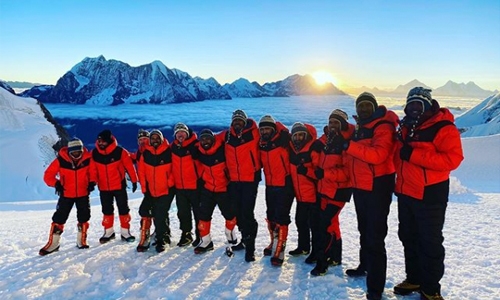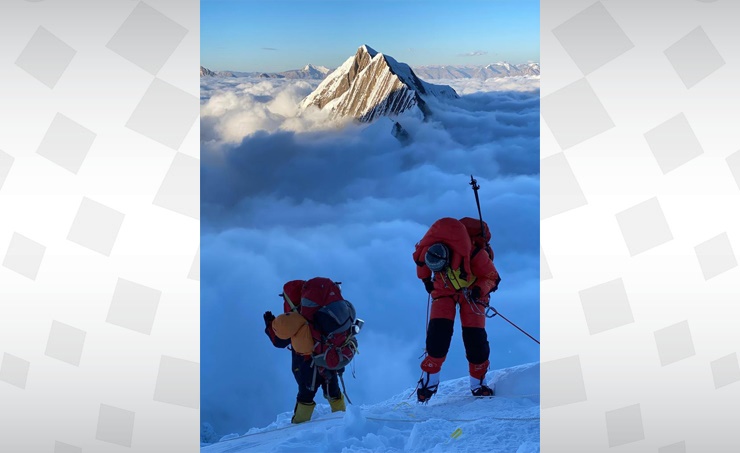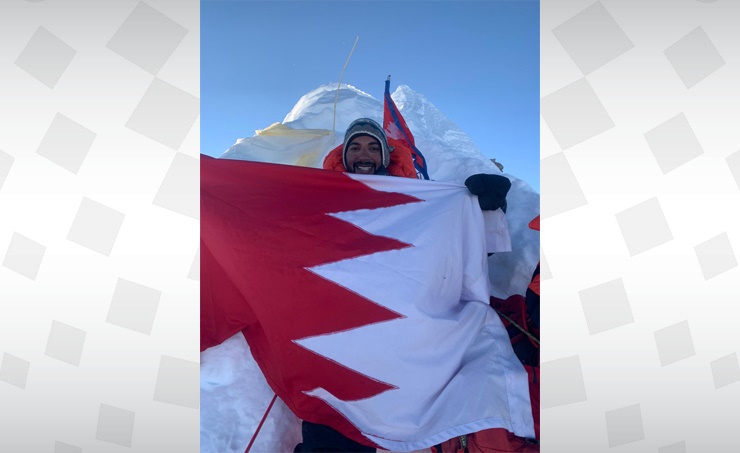Bahrain all set to conquer Mount Everest !
TDT | Manama
The Daily Tribune – www.newsofbahrain.com
After successfully scaling Mount Manaslu, the eighth highest mountain in the world at 8,163 metres above sea level, there is no way but up for the Bahrain Royal Guard team. The next stop is Mount Everest, Earth's highest mountain above sea level, located in the Mahalangur Himal sub-range of the Himalayas. His Highness Major General Shaikh Nasser bin Hamad Al Khalifa, representative of His Majesty the King for Humanitarian Works and Youth Affairs, is confident the Royal Guard team would be able to set foot on the summit of Mount Everest next year.
HH Shaikh Nasser said that reaching the Manaslu summit has boosted the team’s aptitudes to scale Mount Everest and raise the Bahrain flag at the summit. “We are keen on providing full support to the men of the Royal Guard who possess high capabilities that empowered them to overcome several challenges to reach the Manaslu summit, but they now have the bigger challenge of reaching the summit of Everest,” he said. The Royal Guard team completed special training in the Himalayas with the ultimate goal of reaching the summit of Mount Everest in 2021.
The 18-member Royal Guard was assigned by HH Shaikh Nasser to raise the flags of Bahrain and of the Royal Guard on the summit of Mount Manaslu, one of only 14 mountains in the world to exceed 8,000 metres, and known as the deadly mountain in the world of climbing. The Royal Guard spent eight days acclimatising and climbing to the summit of Mount Manaslu. They were able to reach the summit after 10 hours. The team, however, needed to descend 4,000 metres to a safe altitude that did not require additional oxygen. They spent 24 hours climbing and descending. The team burned about 15,000 calories trying to climb to the summit.
Facts about Everest
Mount Everest straddles the border between Nepal and Tibet at the crest of the Himalayan mountain chain. Although reaching the top of the world is an arduous and potentially deadly undertaking due to the extreme altitude, avalanches, icefalls, and other hazards, the mountain lies quite close to the equator, at a latitude of approximately 28 degrees. Earth scientists estimate that Everest is 50 to 60 million years old, a youngster by geological standards. The mountain was formed by the upward force generated when the Indian and Eurasian tectonic plates collided, pushing up the rocks that formed the highest mountain on Earth. That force is still at work today, pushing Everest’s summit about a quarter of an inch higher each year.
A hostile environment
Everest’s summit has approximately one-third the air pressure that exists at sea level, which significantly reduces a climber’s ability to breathe in enough oxygen. Because of this, scientists have determined that the human body is not capable of remaining indefinitely above 19,000 feet. As climbers move higher up the mountain and their oxygen intake is reduced, their bodies are increasingly at risk for a number of ailments, including pulmonary edema, cerebral edema, and blood embolisms. The chances of frostbite are also dramatically increased at such altitude as the heart works harder to pump blood around the body delivering oxygen.
Related Posts



